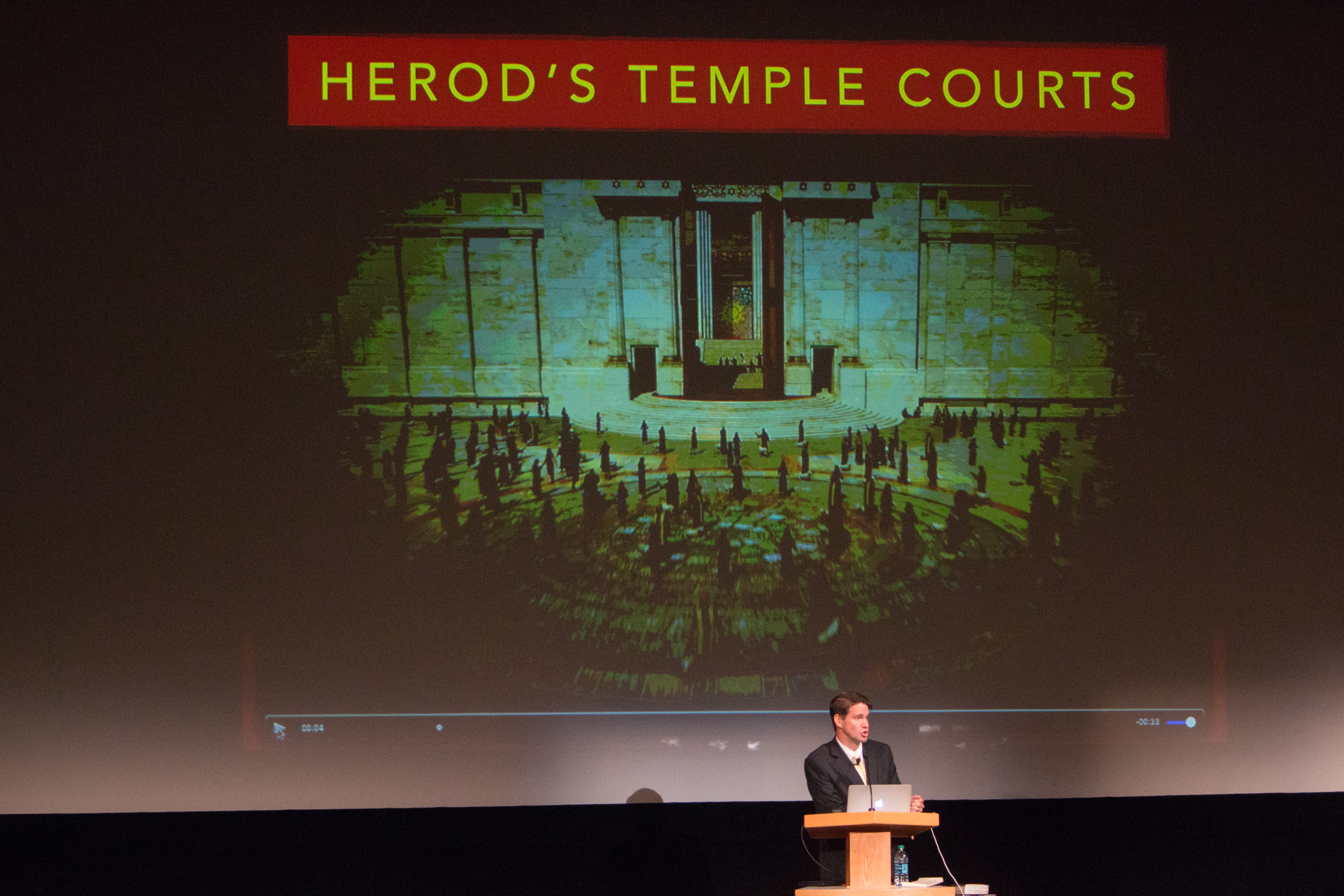
A team of BYU faculty worked together to create an interactive map of geographical sites from the Book of Mormon.
Religion professor Tyler Griffin, animation professor Seth Holladay and Taylor Halverson, faculty consultant for the Center for Teaching and Learning, have worked together for over four years to complete this project.
When Holladay, Griffin and Halverson met, they learned they were all passionate about helping people better understand the Book of Mormon.
The team members have since combined their knowledge of the scriptures and 3-D animation to help students understand the scriptures more quickly, according to Holladay.
Holladay said this will bring clarity to spiritual teachings and allow students to grow closer to Jesus Christ.
The team, known as the Virtual Scriptures Group, recognized this project as a chance for students from different departments to collaborate.
“This was a good opportunity for animation, art and technical students to get involved in creating these visualizations, since their passions and talents can communicate directly to their peers,” Holladay said.
Halverson said he was inspired in 2002 by the idea of 3-D immersive environments. He completed his biblical studies and instructional technology doctorates simultaneously at Indiana University and began looking for ways to use his knowledge of instructional technology to improve the quality of teaching and learning about the Bible.
Halverson played the Xbox game Halo in the Instructional Technology game lab and used it to wind down from his hard work. He said he fell in love with the game’s stunning graphics and immersive nature.
“I fantasized that such a tool could be redeployed fruitfully in the service of learning,” Halverson said.
The Church of Jesus Christ of Latter-day Saints started creating a number of Bible videos in 2012 and wanted an interactive and immersive map in which their Bible videos could be accessed, according to Halverson. The Church asked Halverson to consult on the project and help create these 3-D spaces.
He visited his friend Griffin only two weeks later and noticed Griffin had written “3-D Jerusalem” on the whiteboard in his office.
Halverson learned a few of Griffin’s New Testament class students had completed a 3-D class project. The students created a 3-D walk-through of the temple from Jesus’ time.
Halverson said he brought the BYU and LDS Church teams together, and they spent a number of years working together to build the beta model.
The 2-D map was created in high definition and displays reference points for cities and lands in the Book of Mormon.
The team also developed an interactive version of the map that corresponds to scripture selections on a mock-up Liahona. The locations mentioned in that chapter are then highlighted in a text box, and the Liahona spindle points to the corresponding year.
The Visual Scriptures Group is currently working on transitioning the map to a 3-D environment.
Griffin said the new map will allow users to move around the geographic locations relative to certain points in the Book of Mormon.
“There are so many places in the scriptures that mention little details about geography or timing that can get really confusing if we don’t have a pretty good idea about where things fit into the bigger picture,” Griffin said.
Griffin said the team’s goal is to remove as many unclear barriers as possible so students can read the Book of Mormon story using a map they can mentally contort to fit an actual location on a map of the New World.
“We have been working as a team for over four years to create helpful tools to visually help people make better sense of what they read in the scriptures,” Griffin said.
The group has worked with animation students to develop a depiction of Mormon’s cave and the source plates in order to help people understand the complexity of the abridgment process.
These Book of Mormon resources are free and accessible.
Daniel Smith recently joined the team to help expand the idea of allowing users to view the text of the scriptures on one side of the screen and corresponding visual resources on the other. He will also add digital resources, including major stories and migrations from the Old Testament and Church History.
“We recommend exploring the locations on the maps and reading the scripture references that we share,” Halverson said. “Future versions will have more content, more interactivity, more details and context about the scriptures.”
Holladay said the resources are targeted toward students in BYU religion courses but can help anyone.
“If this project can be meaningful for students, and they can help guide us to know what helps their understanding of the scriptures most, then we hope that can expand to the world,” Holladay said.
Griffin presented the beta release during Education Week in 2016 to over 900 people. The audience was intrigued and later wanted to know where they could find the resources, according to Holladay.

Holladay said the resources help those working on the project as well, since they must immerse themselves in the scriptures to make the project as successful as possible.
“There is still a lot to learn about how to make this product more effective,” Holladay said. “Our students have been making great progress on improving the presentation and accessibility.”




